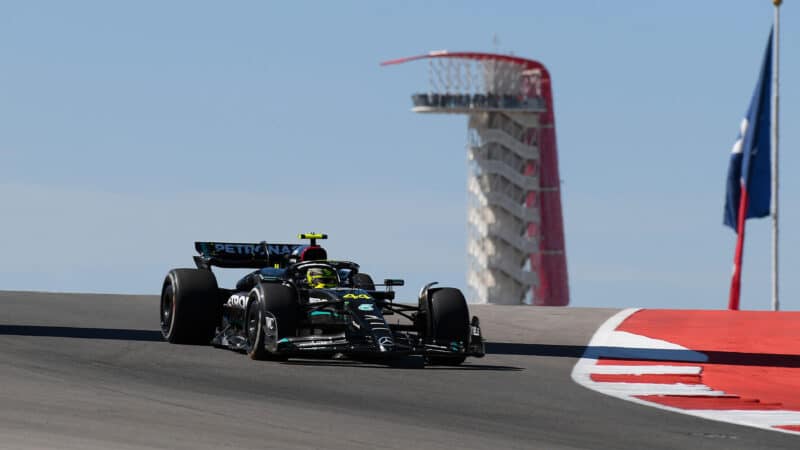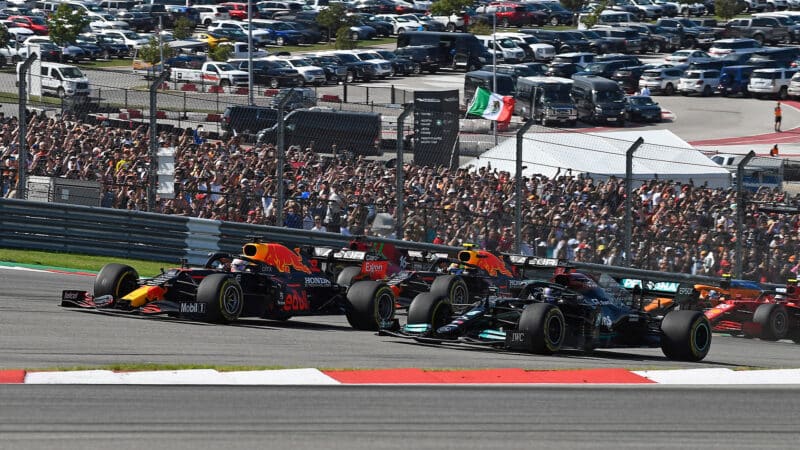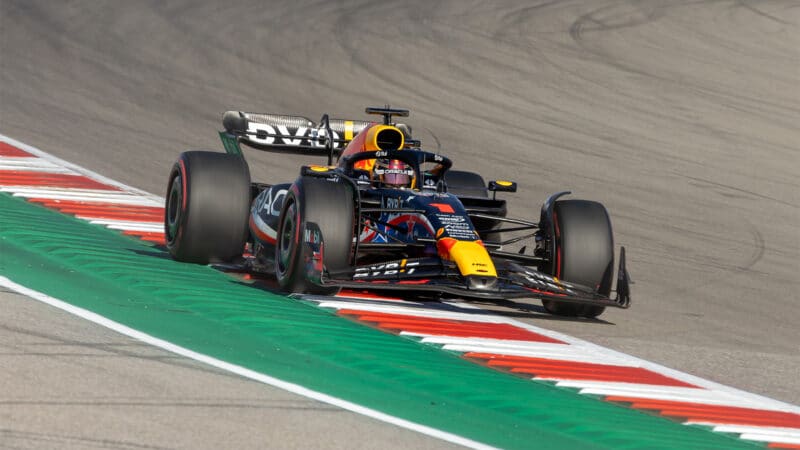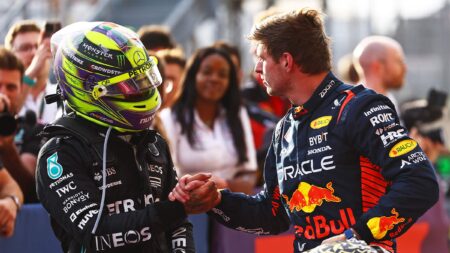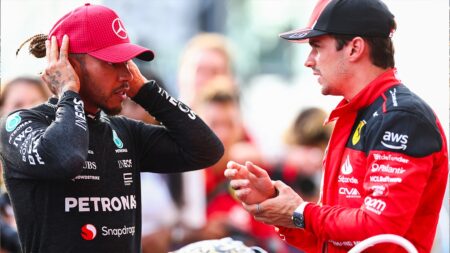Without any possibility of Verstappen passing on track – the cars were too closely-matched for that – Red Bull had to get creative. In what was always going to be a two-stop race because of the tyre deg, it pulled him in outrageously early, on lap 10. Mercedes had done something similar in the first race of the season at Bahrain, and it had won Hamilton that race.
Verstappen came in before he had even cleared the cars of Daniel Ricciardo and Charles Leclerc when he rejoined and to make the strategy work, he needed to pass them immediately. He passed Ricciardo on his out-lap and Leclerc pitted out of his way on the next lap. So that gave him the lead after Hamilton stopped. Hamilton went three laps longer and would run longer again to the second stops, following in the Red Bull’s wheeltracks, but knowing he’d have a significant new tyre grip advantage in the last stint. His last stop was eight laps later than Verstappen’s and he rejoined almost 9sec behind with 19 laps left but on tyres which, by dint of the age difference, should have been 0.8sec faster than Verstappen’s. So the game was set. They each knew what they had to do.
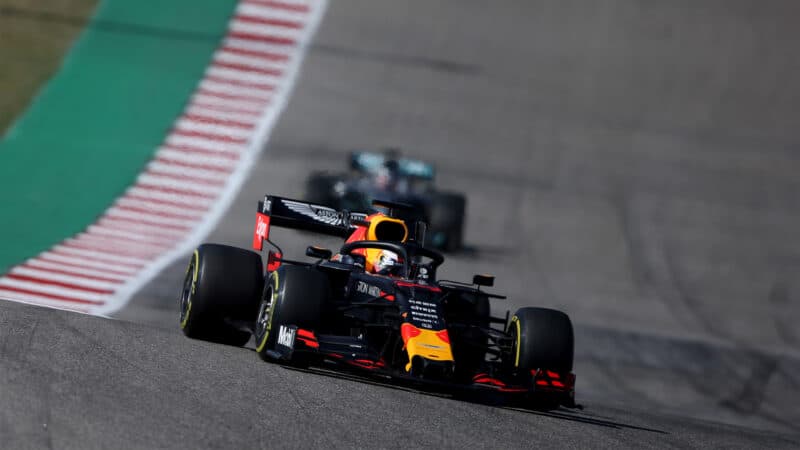
Verstappen leads in ’21 — but Hamilton ominously lurks in the background
Red Bull
Hamilton’s task was to get on the back of the Red Bull at least a couple of laps before the end, but not use up all his tyre advantage in closing the gap. Verstappen’s was to accept that Hamilton was going to catch him before the end and not go so hard in between that he’d have no tyres left with which to defend. Hamilton was in the DRS range by the penultimate lap. “The last two laps were definitely difficult on the tyres,” said Max afterwards. “There wasn’t much grip left. But with two laps to go, I had the Haas in front of me and I was able to benefit from its DRS, so we managed to hang on in the end.”
It was a fascinating contest, and Verstappen had coolly aced it under full title fight pressure. It was immensely impressive. As Hamilton acknowledged afterwards.
2023
Last Sunday, Verstappen gained a place off the grid and Hamilton dropped one, putting them an initial fourth and fifth. Hamilton soon found his way past the Ferraris of Carlos Sainz and Leclerc – they were quick over a lap but with much heavier tyre deg than the other front-runners – and Verstappen was careful not to take too much out of his tyres in doing the same. By the time he’d got up to third, he was around 4sec behind Hamilton. But both were catching Norris’ race-leading McLaren.

